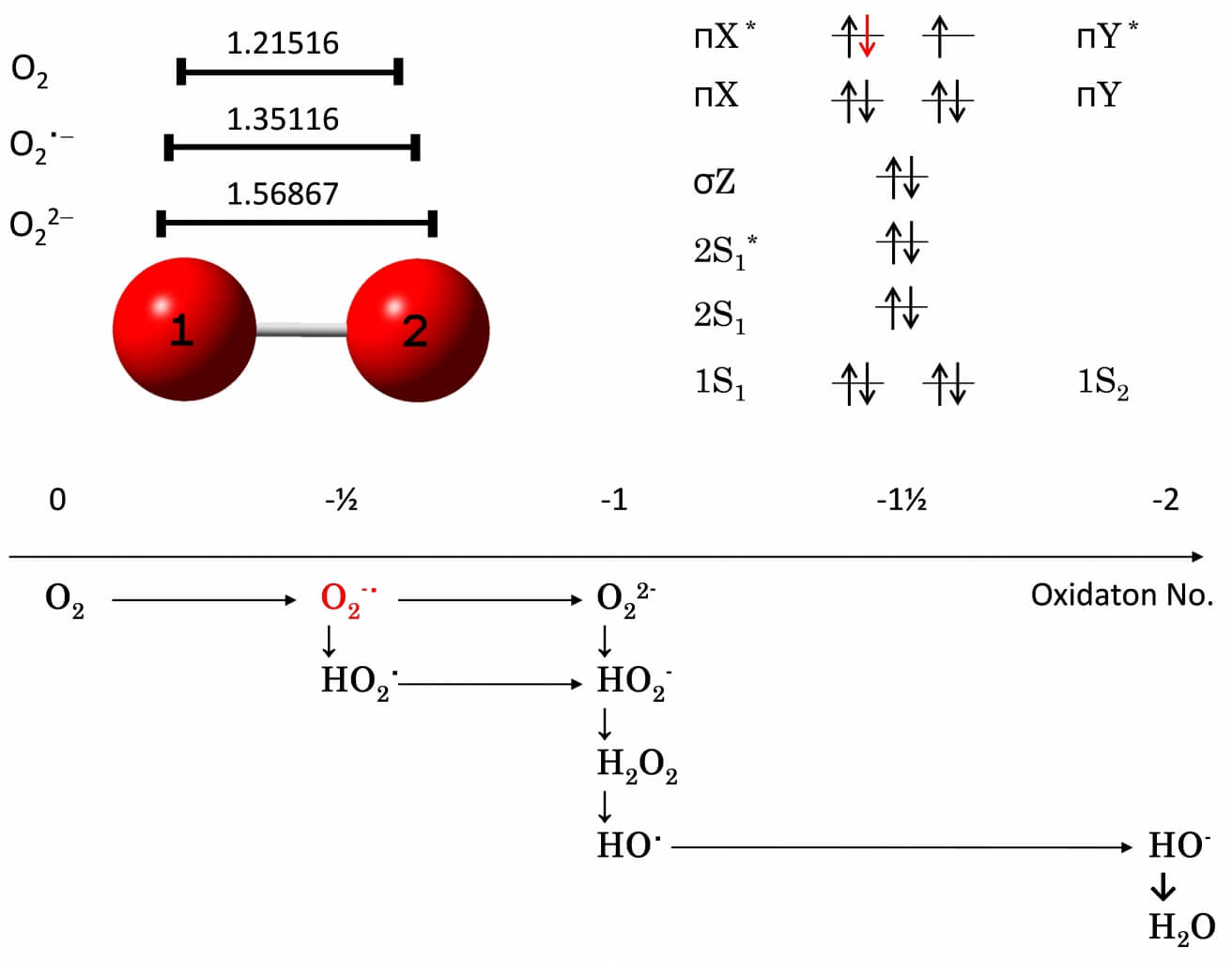O2•−, which is generated by various factors in the living body, is a central substance of reactive oxygen species (ROS) and is known to be deeply related to oxidative damage to cells and DNA. O2•− is metabolized to water while performing oxidative action in the living body, and hydroperoxy radical (HPR, HO2•), which is easily generated by proton addition to O2•− in this metabolic process, is main oxidant of DNA and cells due to its strong oxidative potential. The oxidative mechanism of O2•− via HO2• is an important research subject because it causes aging of living organisms and various diseases.
The oxygen species derived in the process of O2•− metabolism shown in Figure 1 are called the ROS family, and O2•− is produced at a constant concentration in the living body as its origin substance and plays a role of biological defense.
However, oxidative electron transfer, which is actually responsible for biological defense and cell damage, is not directly carried out by O2•−, but is promoted mainly by derived ROS such as HO2•, so there is a close relationship between proton transfer and electron transfer.



